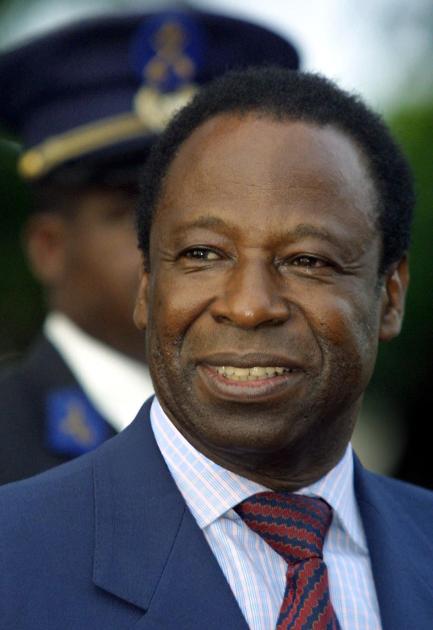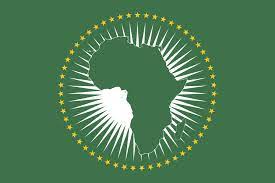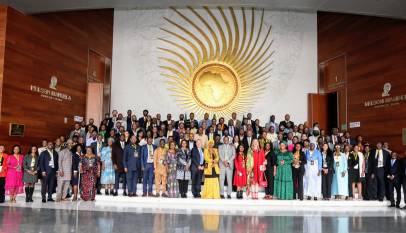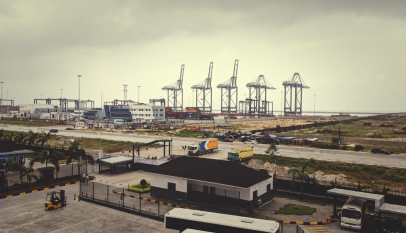TRIBUTE | Amara Essy: A Tribute to a Great Pan-Africanist, By Said Djinnit & El-Ghassim Wan
Said Djinnit and El-Ghassim Wane pay a glowing tribute to Amara Essy, last Secretary-General of the Organization of African Unity (OAU) and first (interim) Chairperson of the African Union Commission whom they describe as an accomplished diplomat and man of vision whose tour de force in Addis Ababa marked a historic turning point in the life of the OAU/AU.

And so it is that, on 8 April 2025, Amara Essy left us, joining the long lineage of servants of the Pan-African ideal who are no longer of this world. He was 80 years old. An accomplished diplomat and man of vision, he marked a historic turning point in the life of the continental body.
We truly came to appreciate Essy’s exceptional qualities after his July 2001 election in Lusaka as the last Secretary-General of the Organization of African Unity (OAU), assuming a year later the role of interim Chairperson of the African Union (AU) Commission. He succeeded Salim Ahmed Salim, who had steered the OAU’s evolution through the post-Cold War era and was assigned the delicate mission of ensuring the transition to the AU.
This task, he carried out with rigor, determination, and humility. In Durban, in July 2002, the texts governing the functioning of the main organs of the AU were adopted and the new Union officially launched during a grandiose ceremony.
Before taking over the leadership of the OAU General Secretariat, Essy had notably served as the Minister of Foreign Affairs of Côte d’Ivoire and as his country’s Permanent Representative to the United Nations, where he held the presidency of the General Assembly, playing a leading role in defending African positions. His experience, network, strategic insight, and benevolent leadership made him uniquely qualified to ensure this successful transition between the two institutional incarnations of Pan-Africanism: the OAU and the AU.
Numerous other accomplishments can be credited to Essy’s leadership during his productive twenty-four-month tenure—from his election as head of the continental organisation’s executive to his departure following the July 2003 Maputo summit.
Indeed, this transformative period saw the adoption of several landmark documents, including the Memorandum of Understanding on the Conference on Security, Stability, Development and Cooperation in Africa (CSSDCA)—an initiative that articulated a bold vision of governance and development in Africa; the Protocol establishing the Peace and Security Council (PSC); the AU Convention on Preventing and Combating Corruption; and the Maputo Protocol on the Rights of Women. All these instruments remain highly relevant to this day.
While guiding the successful transition from OAU to AU and advancing these normative frameworks, Essy remained fully engaged with other pressing issues of the time. He was actively involved in finding solutions to the crises affecting various regions of the continent, particularly in Madagascar, the Central African Republic, and Burundi, skillfully wielding the tools of African diplomacy, even when facing the most assertive leaders.
Well-versed in the intricacies of the international system, Essy had an acute awareness of the asymmetrical distribution of power within it and the inequalities and injustices that characterized it. He was fond of quoting this West African proverb: ‘The hand that gives is above the one that receives,’ as he advocated for a financially autonomous and politically sovereign African Union. Throughout his tenure, he championed this vision with remarkable persistence.
Essy’s management style was one of quiet authority, delegating with confidence and mobilizing energies in a spirit of genuine collaboration.
But what struck people most about him was the man behind the diplomat. He was remarkably humble, generous, discreet, and loyal in friendship. Everywhere he went, he left a profound imprint and earned universal esteem and respect. Those who knew and worked with him cherish memories of his exceptional kindness and attentiveness, qualities that extended well beyond his professional obligations. To the very end, he maintained meaningful bonds with his former collaborators, offering comfort and recognition with the dignified silence of the truly great.
His mandate concluded in July 2003 with the election of former President Alpha Oumar Konaré, yet his role as a bridge-builder between the OAU and AU remains indelible in the continent’s history. In today’s uncertain times, his example continues to inspire: ethics, commitment, discretion, and effectiveness stand as the enduring pillars of his legacy.
Essy often invoked another African adage: ‘In the village, everyone knows who the best dancers are.’ With his passing, Africa has lost one of its most graceful performers on the multilateral stage.
Our grief is profound. Yet we find solace in the wisdom of Birago Diop, who reminds us that:
« Those who die are never gone,
They are in the shadow that grows brighter,
And in the shadow that grows darker …,
They are in the trembling trees,
They are in the whispering wood,
They are in the water that runs,
They are in the water that sleeps … ».
Indeed, Essy’s spirit lives on in the memories, actions, and pathways of countless individuals he inspired across Africa and throughout the world.
Said Djinnit served as Assistant Secretary-General for Political Affairs at the Organisation of African Unity and Commissioner for Peace and Security at the African Union during Amara Essy’s tenure, while El-Ghassim Wane served as Senior Political Officer/Acting Deputy Head of the OAU/AU Conflict Management Centre during Essy’s tenure. This tribute was originally published on Amani Africa; the views expressed in it are those of the authors and do not necessarily reflect African Newspage’s editorial policy.














